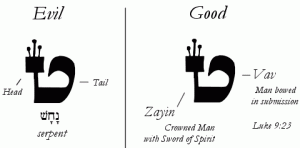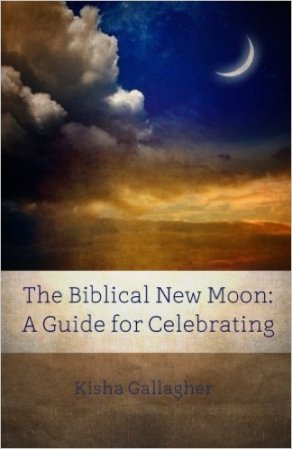In Part I, many Scripture references were given to demonstrate that the sign of Adonai upon one’s hand and forehead is Passover, Sabbath, and the Shema or Words of God. (Dt. 6:4-9) These feasts teach one that YHWH is the Creator, Deliverer, and Law-Giver. He is the supreme authority and King of the Universe.
Initially, I had planned to go directly into the contranym or the mark of the beast, but then I realized that it would be a mistake to not first rehash some key Hebraic concepts. Especially, given how provocative the topic of the mark of the beast is. Thus, there will be a Part III.
Context is king. The mark, which signifies authority, cannot be understood apart from the “image” of the beast. And, the image of the beast must be understood in light of the image of God.
Image of the Beast
Rev 13:15 (NASB) And it was given to him to give breath to the image of the beast, so that the image of the beast would even speak and cause as many as do not worship the image of the beast to be killed.
Does this remind you of this verse?
Gen. 2:7 (NASB) Then the LORD God formed man of dust from the ground, and breathed into his nostrils the breath of life; and man became a living being.
In Targum Onkelos,[1]this verse reads:
Gen. 2:7 And the Lord God created Adam from dust of the ground, and breathed upon his face the breath of lives, and it became in Adam a Discoursing [speaking] Spirit.
 The enemy is a counterfeiter through and through. God gave the breath of life to his image bearers, and it became in Adam a speaking or discoursing spirit. The second beast gives breath (and speech) to the image of the first beast. It is the “speaking image” of the beast that is worshipped. We will return to this image after reviewing the image of God.
The enemy is a counterfeiter through and through. God gave the breath of life to his image bearers, and it became in Adam a speaking or discoursing spirit. The second beast gives breath (and speech) to the image of the first beast. It is the “speaking image” of the beast that is worshipped. We will return to this image after reviewing the image of God.
Image of God
Gen. 1:26-27 (NASB) Then God said, “Let Us make man in Our image, according to Our likeness; and let them rule over the fish of the sea and over the birds of the sky and over the cattle and over all the earth, and over every creeping thing that creeps on the earth.” 27 God created man in His own image, in the image of God He created him; male and female He created them.
Gen. 5:1-2 (LITV) This is the book of the generations of Adam: In the day that God created man. He made him in the likeness of God. 2 He created them male and female, and blessed them, and called their name Adam in the day when they were created.
Man and woman were created in the image of Elohim. The Hebrew word for image is tzelem. The following is The Complete Word Study Dictionary’s definition.[2]
H6754 צֶלֶם tṣelem: A masculine noun meaning an image, a likeness, a statue, a model, a drawing, a shadow. The word means image or likeness; its most celebrated theological and anthropological use was to depict human beings as made in God’s own image (Gen 1:26-27; Gen 5:3). People continue to be in His image even after the fall, although the image is marred (Gen 9:6), and still serves as the basis of the prohibition not to kill human beings… The word is also used in a concrete sense to depict images cut out of or molded from various materials. The word describes the images or idols of foreign or strange gods (2Ki 11:18; Amo 5:26). The people of Israel produced images used as idols from their own jewelry (Eze 7:20; Eze 16:17). Israel was, on its entrance into Canaan, to destroy all the molten images of the heathen (Num 33:52). In Eze 23:14, this word refers to pictures of Babylonians that enticed the people of Israel into apostasy when they saw them (Eze 23:14).
Mankind is the shadow of Elohim. In Hebrew thought, this isn’t about one’s appearance, rather it one’s purpose and actions. YHWH placed within mankind (both male and female) a shadow or likeness of His character and will. We are His representatives in the earth, His image or shadow bearers. Shadows or images mimic the reality. Thus, one’s words, deeds, actions, and fruit will either confirm or profane Adonai’s image. This is why tzelem can also mean a graven image or an idol:
Ex. 20:4 (NASB) “You shall not make for yourself an idol (tzelem), or any likeness of what is in heaven above or on the earth beneath or in the water under the earth. (See also Lev. 26:1, Ezek. 16:17, etc.)
If the above sounded familiar, it’s because it is a quote from my article entitled, Sukkot: Hidden in the Shade of God. In it, I tie several themes together regarding the image of God, a shadow of things to come, Betzalel, Mary, and the Transfiguration. These things demonstrate how one that is the true image of God in the earth is a builder, most specifically of the Kingdom.
What do the tzelem of God do? They subdue and rule over the fish, birds, and the beasts. (Not one another.) In Greek, the word for image in Revelation 13 and in the Septuagint of Genesis 1:27 is eikon. Thayer’s Greek Lexicon defines it as:
G1504 εἰκών eikōn 1) an image, figure, likeness. 1a) an image of the things (the heavenly things). 1a1) used of the moral likeness of renewed men to God. 1a2) the image of the Son of God, into which true Christians are transformed, is likeness not only to the heavenly body, but also to the most holy and blessed state of mind, which Christ possesses. 1b) the image of one. 1b1) one in whom the likeness of any one is seen. 1b2) applied to man on account of his power of command. 1b3) to Christ on account of his divine nature and absolute moral excellence. Part of Speech: noun feminine. A Related Word by Thayer’s/Strong’s Number: from G1503
There are two possible images that one can reflect to the world: Adonai’s or the Beast’s.
The Image of the Beast, From the Beginning
In Revelation 13, people worship the eikon of the beast. The first mention of “a beast” in the Bible is on day six of creation.[3] The same day (number) that man was created.
Gen. 1:24-31 (NASB) Then God said, “Let the earth bring forth living creatures after their kind: cattle and creeping things and beasts of the earth after their kind”; and it was so. 25 God made the beasts of the earth after their kind, and the cattle after their kind, and everything that creeps on the ground after its kind; and God saw that it was good. 26 Then God said, “Let Us make man in Our image, according to Our likeness; and let them rule over the fish of the sea and over the birds of the sky and over the cattle and over all the earth, and over every creeping thing that creeps on the earth.” 27 God created man in His own image, in the image of God He created him; male and female He created them. 28 God blessed them; and God said to them, “Be fruitful and multiply, and fill the earth, and subdue it; and rule over the fish of the sea and over the birds of the sky and over every living thing that moves on the earth.” 29 Then God said, “Behold, I have given you every plant yielding seed that is on the surface of all the earth, and every tree which has fruit yielding seed; it shall be food for you; 30 and to every beast of the earth and to every bird of the sky and to every thing that moves on the earth which has life, I have given every green plant for food”; and it was so. 31 God saw all that He had made, and behold, it was very good. And there was evening and there was morning, the sixth day.
In creation, the beast was created before the man. It was born first, so to speak. But, that in no way placed the beast in authority over the Adam. “The older shall serve the younger” is what the LORD told Rebekah when she sought Him about the warring twins in her womb. Her sons, Esau and Jacob, are archetypes of the two images man can reflect. The elder is red and hairy like a beast, and grows up to prefer the field. He sells his birthright in a moment of hunger, a snapshot in time, which is the epitome of the flesh wanting instant gratification. Jacob, though far from perfect, is a smooth man, peaceful, a dweller of tents. It is not a coincidence that their father, Isaac, was SIXTY years old when they were born.
Gen. 25:23-28 (NASB) The LORD said to her, “Two nations are in your womb; And two peoples will be separated from your body; And one people shall be stronger than the other; And the older shall serve the younger.” 24 When her days to be delivered were fulfilled, behold, there were twins in her womb. 25 Now the first came forth red, all over like a hairy garment; and they named him Esau. 26 Afterward his brother came forth with his hand holding on to Esau’s heel, so his name was called Jacob; and Isaac was sixty years old when she gave birth to them. 27 When the boys grew up, Esau became a skillful hunter, a man of the field, but Jacob was a peaceful man, living in tents. 28 Now Isaac loved Esau, because he had a taste for game, but Rebekah loved Jacob.
 It was as if even in the womb, the older, beast-like Esau was trying to crush the head of Jacob. I suggest rereading this account in Genesis. Pay special attention to the actions and nature of Esau. His tzelem does not reflect Adonai. He is much more like a beast. On another mystical level, we all are the twins. We are Esau AND Jacob. Who will win in the end?
It was as if even in the womb, the older, beast-like Esau was trying to crush the head of Jacob. I suggest rereading this account in Genesis. Pay special attention to the actions and nature of Esau. His tzelem does not reflect Adonai. He is much more like a beast. On another mystical level, we all are the twins. We are Esau AND Jacob. Who will win in the end?
Both the beast and mankind are day six creations. From this point forward, the number six in Scripture is teaching one about the nature of the beast or the nature of man. To be a true “man” or Adam (male and female) one will reveal the image of God in the earth. To reveal anything else, is an image of a beast. Just like Esau and Jacob.
Beasts live by instinct, desire, appetites, and fleshly drives. Mankind has all the same instincts, but he/she is to live by every Word that proceeds from the mouth of God. One’s flesh nature, though not evil in and of itself, should not rule or be what drives a person. This sets mankind apart from their day six counterparts, the beasts.
 Dr. Alewine teaches that the basic desires of a beast are to eat, sleep, procreate, play games, and expand territory.[4] None of these things are evil, and a beast is fulfilling its God given purpose by following these instincts. Mankind also has these impulses; and, none of them are sin when fulfilled – IF they are governed by the Word of God. But any one of these impulses, if allowed to rule (control) a person will lead to sin.
Dr. Alewine teaches that the basic desires of a beast are to eat, sleep, procreate, play games, and expand territory.[4] None of these things are evil, and a beast is fulfilling its God given purpose by following these instincts. Mankind also has these impulses; and, none of them are sin when fulfilled – IF they are governed by the Word of God. But any one of these impulses, if allowed to rule (control) a person will lead to sin.
You are meant to be a man, which is the tzelem of Adonai, not a beast. You are meant to rule over this nature within yourself by constantly meditating upon and obeying the Words of Life. The beast, like the serpent, will challenge God’s Word, His Authority, and your resolve. This is what happened in the Garden of Eden.
Gen. 3:1 (NKJV) Now the serpent was more cunning than any beast of the field which the LORD God had made. And he said to the woman, “Has God indeed said, ‘You shall not eat of every tree of the garden’?”
What does a tempter, like the serpent, appeal to? How is he “cunning” or “crafty?” He is a beast, so he will always appeal to the desires of the flesh and the power of emotions, because that is all he knows. The story of the fall is packed with words that speak of desire. Why shouldn’t we have what we want? Did God really say? That’s the voice of the beast. It is the lips of a seductress. It whispers and entices. It is the voice that questions, twists, and perverts the Word of God to have what it wants without any pesky misgivings.
It gives breath and speech to the things that should have no voice, and seeks to kill those that will not bow down to its will. (Rev. 13:15)
The first murderer, Cain, wrestled with this “speaking beast” in the form of jealous anger. Adonai warned him:
Gen 4:6-7 (NASB) Then the LORD said to Cain, “Why are you angry? And why has your countenance fallen? 7 If you do well, will not your countenance be lifted up? And if you do not do well, sin is crouching at the door; and its desire is for you, but you must master it.”
In the past, I’ve made the mistake of misreading these verses. (To be fair, translations can be misleading.) Unlike English, Hebrew indefinite pronouns must always refer to a correctly gendered noun. The pronouns “its and it” of verse seven read as if they are replacing the noun “sin.” But, sin is feminine and “its and it” refer to a masculine noun. To find the masculine noun these pronouns are replacing, one must look back to verse 6. The phrase “your countenance fallen” is more literally “your face has fallen.” Face is a masculine noun. This is an idiom for intense anger.
It wasn’t “sin” that had desire for Cain, but something that was within him: his anger! Emotions are part of the lower, beast nature of man. God told Cain to master or rule over this powerful force. If not, the emotion of anger would master him. It was close at hand, at the door, ready to take the reins. Cain did not heed the warning of the LORD. The very next verse says:
Gen. 4:8 (NRSV) Cain said to his brother Abel, “Let us go out to the field.” And when they were in the field, Cain rose up against his brother Abel, and killed him.
Notice the reference to the field. (It’s been present in many of the passages I’ve quoted above.) The field is where beasts dwell. The serpent was the most cunning beast of the field. Cain is warned that his strong emotion of anger is crouching at his door. In the very next verse, his anger rose up from its crouch and killed his brother. He became the beast. Anger took over and ruled the man, and murder was the result.
Rev. 13:15 (NASB) And it was given to him to give breath to the image of the beast, so that the image of the beast would even speak and cause as many as do not worship the image of the beast to be killed.
Men (and women) ruled by the beast nature are destroyers, whether they realize it or not. One ruled by their desires and emotions live by the animal kingdom’s “survival of the fittest.” At its core, it is selfish and self-serving, because it is fueled by FEAR. It doesn’t want to play nice, share, or put anything or anyone before what it wants. It is the epitome of want. It seeks to subjugate and dominate others because it serves only its own desire. Consider the beasts of the field. This is exactly what they do.
There were two beasts that spoke in the Torah: the serpent in the Garden and Balaam’s ass. In both cases, the people involved had been enticed by their desires. Chavah (Eve) desired the fruit from the Tree of Knowledge of Good and Evil. Balaam desired honor and to profit from his prophetic gift. The  serpent’s words roused and deceived Chavah into fulfilling her desire. Balaam’s ass, a beast of burden, tried to save Balaam (and herself) from the sword of the angel. She was a voice of reason to the hardened prophet. He must only speak what God tells him to speak.
serpent’s words roused and deceived Chavah into fulfilling her desire. Balaam’s ass, a beast of burden, tried to save Balaam (and herself) from the sword of the angel. She was a voice of reason to the hardened prophet. He must only speak what God tells him to speak.
These two examples are perfect teachers. The serpent is an untamable, cold blooded creature. It hisses, charms, and bewitches the listener. This is akin to the unbridled lower, beast nature. The ass is broken and trained to carry a burden. She is faithful to her master. This is akin to one that has bridled their emotions and nephesh (flesh) with all its impulses.
The Image of the Son
How can one overcome the fallen nature and be a proper tzelem of Adonai? Yeshua is the Way!
Col. 1:15-23 (NASB) He is the image of the invisible God, the firstborn of all creation. 16 For by Him all things were created, both in the heavens and on earth, visible and invisible, whether thrones or dominions or rulers or authorities—all things have been created through Him and for Him. 17 He is before all things, and in Him all things hold together. 18 He is also head of the body, the church; and He is the beginning, the firstborn from the dead, so that He Himself will come to have first place in everything. 19 For it was the Father’s good pleasure for all the fullness to dwell in Him, 20 and through Him to reconcile all things to Himself, having made peace through the blood of His cross; through Him, I say, whether things on earth or things in heaven. 21 And although you were formerly alienated and hostile in mind, engaged in evil deeds, 22 yet He has now reconciled you in His fleshly body through death, in order to present you before Him holy and blameless and beyond reproach— 23 if indeed you continue in the faith firmly established and steadfast, and not moved away from the hope of the gospel that you have heard, which was proclaimed in all creation under heaven, and of which I, Paul, was made a minister.
 We are to be conformed into the image of the second Adam. (Rom. 8:29ff) Not the first Adam. The older shall serve the younger. This is accomplished most notably through suffering, which is something the beast hates. But it also requires diligence and mindfulness. It is a lifelong process. While the beast seeks to subjugate and dominate, the Spirit of the Lord brings freedom!
We are to be conformed into the image of the second Adam. (Rom. 8:29ff) Not the first Adam. The older shall serve the younger. This is accomplished most notably through suffering, which is something the beast hates. But it also requires diligence and mindfulness. It is a lifelong process. While the beast seeks to subjugate and dominate, the Spirit of the Lord brings freedom!
2 Cor. 3:17-18 (NASB) Now the Lord is the Spirit, and where the Spirit of the Lord is, there is liberty. 18 But we all, with unveiled face, beholding as in a mirror the glory of the Lord, are being transformed into the same image from glory to glory, just as from the Lord, the Spirit.
I’ll leave you with Paul’s instruction in this matter. He gives examples of both images, two kingdom attitudes, two paths. The more we know the traits of each side, the more wisdom and understanding we will have to discern between the beast and the man.
Col. 3:1-17 (NASB)
1 Therefore if you have been raised up with Christ, keep seeking the things above, where Christ is, seated at the right hand of God.
2 Set your mind on the things above, not on the things that are on earth.
3 For you have died and your life is hidden with Christ in God.
4 When Christ, who is our life, is revealed, then you also will be revealed with Him in glory.
5 Therefore consider the members of your earthly body as dead to immorality, impurity, passion, evil desire, and greed, which amounts to idolatry.
6 For it is because of these things that the wrath of God will come upon the sons of disobedience,
7 and in them you also once walked, when you were living in them.
8 But now you also, put them all aside: anger, wrath, malice, slander, and abusive speech from your mouth.
9 Do not lie to one another, since you laid aside the old self with its evil practices,
10 and have put on the new self who is being renewed to a true knowledge according to the image of the One who created him—
11 a renewal in which there is no distinction between Greek and Jew, circumcised and uncircumcised, barbarian, Scythian, slave and freeman, but Christ is all, and in all.
12 So, as those who have been chosen of God, holy and beloved, put on a heart of compassion, kindness, humility, gentleness and patience;
13 bearing with one another, and forgiving each other, whoever has a complaint against anyone; just as the Lord forgave you, so also should you.
14 Beyond all these things put on love, which is the perfect bond of unity.
15 Let the peace of Christ rule in your hearts, to which indeed you were called in one body; and be thankful.
16 Let the word of Christ richly dwell within you, with all wisdom teaching and admonishing one another with psalms and hymns and spiritual songs, singing with thankfulness in your hearts to God.
17 Whatever you do in word or deed, do all in the name of the Lord Jesus, giving thanks through Him to God the Father.
More to come in Part III.
[1]Targum Onkelos is the official eastern (Babylonian) Aramaic translation to the Torah. Its authorship is attributed to Onkelos, a famous convert to Judaism in Tannaic times (c. 35–120 CE).
[2]The Complete Word Study Dictionary: Old Testament by Warren Baker. Retrieved using Strong’s number H6754 on E-Sword Bible software.
[3]Why the focus on the beginning? Because it teaches the end. Is. 46:9-10 (TLV) Remember the former things of old: For I am God—there is no other. I am God, and there is none like Me—10 declaring the end from the beginning, from ancient time, what is yet to come, saying, “My purpose will stand, and I will accomplish all that I please.”
[4] The Creation Gospel Workbook Four: The Scarlet Harlot and the Crimson Thread



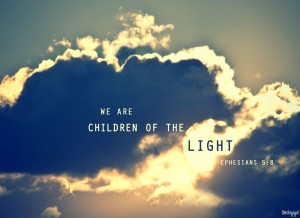
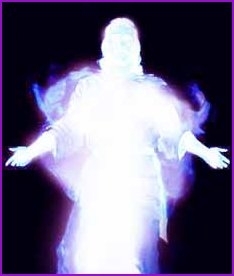
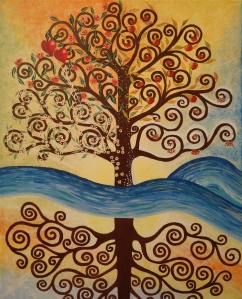
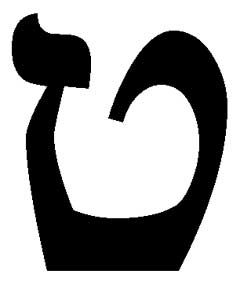
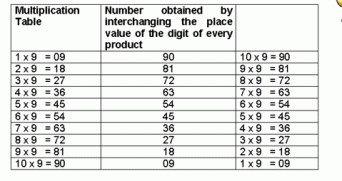
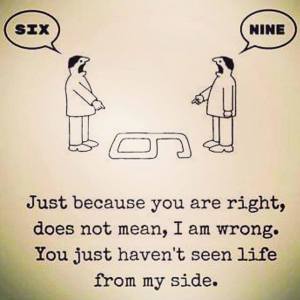 The dualism continues with the Hebrew tet if one considers the modern numeral 9. It appears to be an inverted 6 — the number for both man and the beast. This question from the very beginning is one that we all must answer. Will you be a man created in the image of Elohim or will you, in the end, be found marked with the image of the beast? When the Creator turns us upside down in judgment (9), either a man or a beast (6) will be revealed.
The dualism continues with the Hebrew tet if one considers the modern numeral 9. It appears to be an inverted 6 — the number for both man and the beast. This question from the very beginning is one that we all must answer. Will you be a man created in the image of Elohim or will you, in the end, be found marked with the image of the beast? When the Creator turns us upside down in judgment (9), either a man or a beast (6) will be revealed.